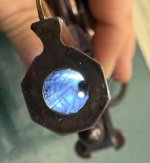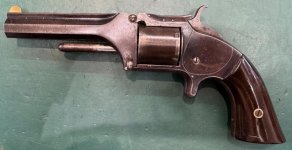wyoming-74
Member
- Joined
- Jan 21, 2025
- Messages
- 10
- Reaction score
- 4
Hello,
I'm new to the forum.
I'm French, and I'm starting a collection of S&W rifles from the first three generations.
I've been offered a Model No. 2 with a 4" barrel.
It seems to be a fairly rare model.
I'm wondering if the barrel has been shortened. The front sight doesn't seem straight; it's very prominent and very close to the markings.
How can you identify a shortened barrel?
Thank you all for your advice.
Olivier
I'm new to the forum.
I'm French, and I'm starting a collection of S&W rifles from the first three generations.
I've been offered a Model No. 2 with a 4" barrel.
It seems to be a fairly rare model.
I'm wondering if the barrel has been shortened. The front sight doesn't seem straight; it's very prominent and very close to the markings.
How can you identify a shortened barrel?
Thank you all for your advice.
Olivier



